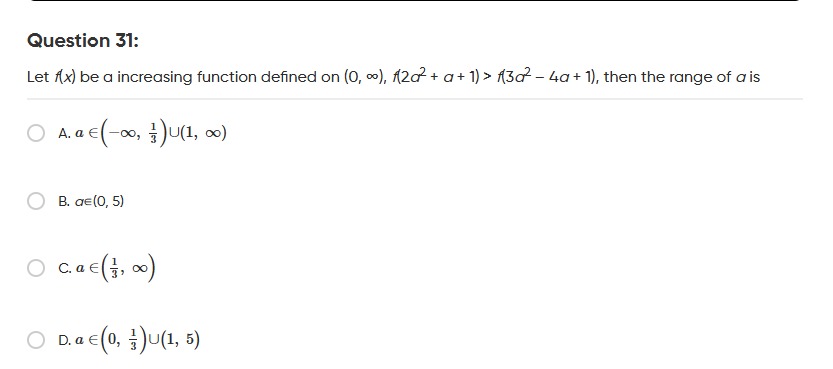Question
Question: Let f(x) be a increasing function defined on (0, ∞), $f(2a^2 + a + 1) > f(3a^2 - 4a + 1)$, then the ...
Let f(x) be a increasing function defined on (0, ∞), f(2a2+a+1)>f(3a2−4a+1), then the range of a is

A
a∈(−∞,31)∪(1,∞)
B
a∈(0,5)
C
a∈(31,∞)
D
a∈(0,31)∪(1,5)
Answer
a∈(0,31)∪(1,5)
Explanation
Solution
Since f(x) is increasing, 2a2+a+1>3a2−4a+1, which simplifies to a2−5a<0, or a(a−5)<0. This inequality holds for 0<a<5. Also, the arguments of f must be positive:
- 2a2+a+1>0. This is always true as the discriminant is negative and the leading coefficient is positive.
- 3a2−4a+1>0. The roots of 3a2−4a+1=0 are a=1/3 and a=1. Since the parabola opens upwards, this inequality holds for a<1/3 or a>1. Combining 0<a<5 with (a<1/3 or a>1) gives the intersection (0,1/3)∪(1,5).
